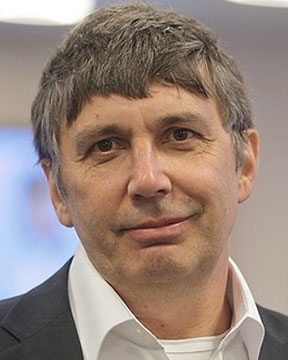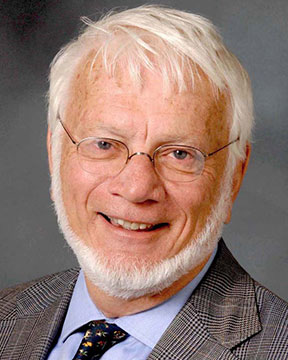ORALS
SESSION: IronMonPM2-R1
| Afonso International Symposium on Advanced Sustainable Iron and Steel Making(6th Intl. Symp. on Advanced Sustainable Iron and Steel Making) |
| Mon Nov, 5 2018 / Room: Mar Azul (50/1st) | |
| Session Chairs: Juergen Antrekowitsch; Session Monitor: TBA |
15:55: [IronMonPM209]
The Renewability of Metal Resources, Recycling Opportunities and Limits Juergen
Antrekowitsch1 ;
Gustav
Hanke1 ;
1University of Leoben, Leoben, Austria;
Paper Id: 358
[Abstract] Primary resources nowadays show decreasing qualities regarding metal content and impurities. The alternative, to go for secondary raw materials like scraps and follow circular economy strategies, suffers from the often low availability of relevant scraps.
In parallel the question, how limited Europe is in allowing new technologies to utilize possible metal resources, becomes important.
In this context, a relatively new metal resource, by-products from metallurgical industry, have to be considered.
Due to the long history of Europe in metal industry, huge amounts of such materials are available. Nevertheless, also in this case the question emerges, if Europe is able to cope with its limits to use this potential metal source in an appropriate way.
The University of Leoben tries to realize an optimized use of various by-products combined with the development of a certification system, similar to procedures used in primary metallurgy to allow a better evaluation of by-products.
SESSION: IronMonPM2-R1
| Afonso International Symposium on Advanced Sustainable Iron and Steel Making(6th Intl. Symp. on Advanced Sustainable Iron and Steel Making) |
| Mon Nov, 5 2018 / Room: Mar Azul (50/1st) | |
| Session Chairs: Juergen Antrekowitsch; Session Monitor: TBA |
15:55: [IronMonPM209] Plenary
Steel Mill Dust - Only a Zinc Resource or a Potential Material for Multi Metal Recycling? Juergen
Antrekowitsch1 ;
Gustav
Hanke1 ;
1University of Leoben, Leoben, Austria;
Paper Id: 448
[Abstract] Steel mill dust nowadays is a well-known secondary resource for zinc. Most of the companies treating this dust operate the established waelz process. However, even though it is known as best
available technology, it finally only recovers zinc and does not create any value out of the other metals contained in the dust such as lead, iron etc. Moreover, the waelz process generates huge amounts of new residues which become more and more difficult to landfill.
The often promoted concept of circular economy also requires a more efficient use of different resources to avoid the loss of raw materials.
With this even the waelz kiln operators have started to think about utilization of the resulting slags and an optimized use of the produced zinc concentrate which also includes lead. Beside this, new developments try to offer better solutions especially regarding the realization of zero waste strategies.
This paper discusses different options for a multi-metal recovery out of steel mill dust from the technical as well as economical point of view. Special emphasis is put on a development done at the University of Leoben. This so called 2sDR-process (two-step-dust-recycling) tries to combine two general aims, the recovery of different metals and the generation of a high quality zinc product and is currently undergoing the upscaling process to a pilot plant size.
References:
[1] Rütten, J. (2011). Various Concepts for the Recycling of EAFD and Dust from Integrated Steel Mills, 3rd Seminar, Networking between Steel and Zinc, GDMB, Leoben.
[2] Antrekowitsch J, Rösler G, Steinacker S. State of the Art in Steel Mill Dust Recycling. Chemie-Ingenieur-Technik. 2015 ;87 (11):1498-1503
[3] Steinlechner, St. (2013). Amelioration and market strategies for zinc oxide with focus on secondary sources, Dissertation, Leoben.
[4] Rösler G., C. Pichler, J. Antrekowitsch und S. Wegscheider: “2sDR”: Process Development of a Sustainable Way to Recycle Steel Mill Dusts in the 21st Century. JOM 66 (2014) 9, S. 1721–1729
SESSION: Non-ferrousMonAM-R7
| 6th Intl. Symp. on Sustainable Non-ferrous Smelting and Hydro/Electrochemical Processing |
| Mon Nov, 5 2018 / Room: Pontal (50/2nd) | |
| Session Chairs: Margarita Gutierrez-Ruiz; Gustav Hanke; Session Monitor: TBA |
11:45: [Non-ferrousMonAM02] Keynote
Characterization Strategies for Metallurgical by-Products: Case Study Jarosite Juergen
Antrekowitsch1 ;
0 ;
Gustav
Hanke1 ;
1University of Leoben, Leoben, Austria;
Paper Id: 447
[Abstract] Metallurgical treatment of ore concentrates produces high amounts of different by-products. These materials often contain high grades of different metals, but are dumped in many cases as there is actually no method of an economical treatment available.
For developing, or adapting a proper process, detailed knowledge of the materials characteristics is needed. The chemical composition is relatively easy to determine using standard analytical methods but can only be seen as a first, very general step. Mineralogical characterization is of prime importance to identify and quantify phases carrying the metals of interest as well as valueless phases.
The final aim is to develop a characterization procedure which defines the appropriate analytical methods for specific materials. Actually precipitation- and leach-residues from hydrometallurgical zinc production (jarosite) are in the focus of research at University of Leoben. The material contains different valuables such as zinc, lead, copper and silver. Various methods (XRF, ICP-MS, etc.) have been used for chemical analysis as well as XRD for identification of major phases. Scanning electron microscopy is the tool of choice for identifying minor phases and chemical analysis of single grains. So far, the value of the material has been proven. Further work will focus on quantification of already accomplished results.
References:
[1] Balladares E, Kelm U, Helle S, Parra R, Araneda E. 2014. Chemical-mineralogical characterization of copper smelting flue dust. Dyna. Volume 81(186). p.11-18.
[2] Piatak N M, Seal R R, Hammarstrom J M, Meier A L, Briggs P H. 2003. Geochemical Characterization of Slags, Other Mine Waste, and Their Leachate from the Elizabeth and Ely Mines (Vermont), the Ducktown Mining District (Tennessee), and the Clayton Smelter Site (Idaho). US Geological Survey. Open-File Report 03-260.
[3] Rizescu C, Bacinschi Z, Stoian E, Polinescu A. 2010. Characterisation of steel mill electric-arc furnace dust. In: Advances in waste management. 4th WSEAS International Conference on Waste Management, Water Pollution, Indoor Climate (WWAI ‘10). p.139-143.
[4] Vereš J, Šepelák V, Hredzák S. 2015. Chemical, mineralogical and morphological characterisation of basic oxygen furnace dust. In: Mineral Processing and Extractive Metallurgy, Volume:124(1), p. 1-8.
[5] Jamieson H E, Walker S R, Parsons M B. 2015. Mineralogical characterization of mine waste. In: Applied Geochemistry. Volume 57. P. 58-105.
[6] Hanke G, Antrekowitsch J. 2018. Characterisation and pyrometallurgical recycling of jarosite type residues out of zinc primary metallurgy. In: World of Metallurgy – Erzmetall. Volume 71.1. p. 25-30.
[7] Pappu A, Saxena M, Asolekar S R. 2006. Jarosite characteristics and its utilization potentials. In: Science of the Total Environment. Volume 359.1. p 232-243.
[8] Sinclair R J. The Extractive Metallurgy of Zinc. Victoria (Australia): Australasian Institute of Mining and Metallurgy; 2001. p.31-105.
[9] Onuk P, Melcher F, Mertz?Kraus R, Gäbler H E, Goldmann S. 2017. Development of a Matrix?Matched Sphalerite Reference Material (MUL?ZnS?1) for Calibration of In Situ Trace Element Measurements by Laser Ablation?Inductively Coupled Plasma?Mass Spectrometry. In: Geostandards and Geoanalytical Research. Volume 41(2). p. 263-272.
[10] Wilson S A, Ridley W I, Koenig A E. 2002. Development of sulfide calibration standards for the laser ablation inductively-coupled plasma mass spectrometry technique. In: Journal of Analytical Atomic Spectrometry. Volume 17(4). p. 406-409.



















